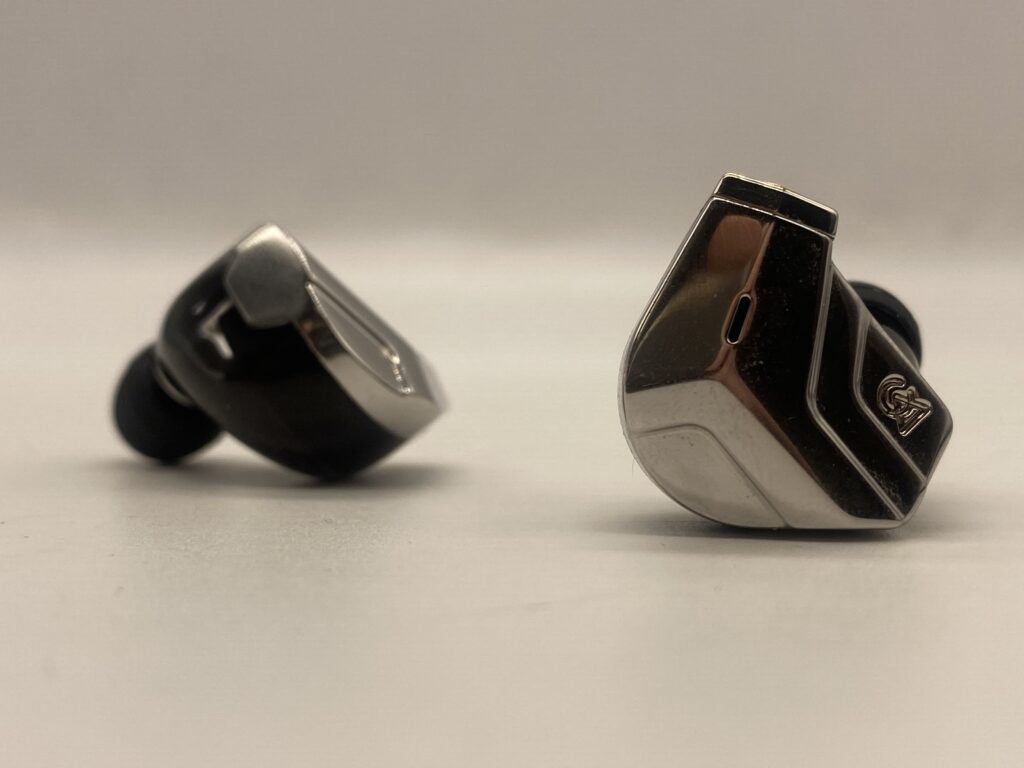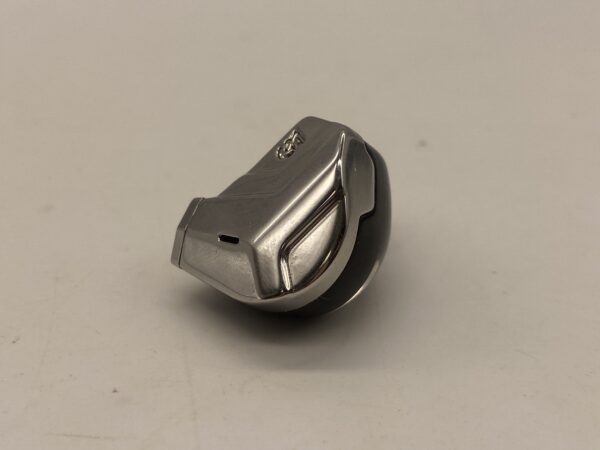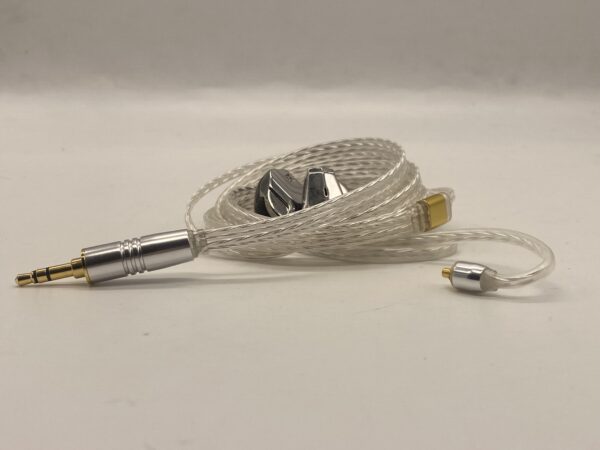Earlier this year, Campfire Audio launched the Moon Rover, and now they’ve released their biggest IEM of the year. The Astrolish costs a thousand dollars more, making it the priciest IEM they’ve had since the Trifecta. It’s also another planar IEM, the Supermoon being their last effort, which I found to be one of my favorites from the brand. Can the Astrolith surpass it?
What You Get
-
Silver-plated Time Stream IEM cable with silver metal hardware in both 3.5mm and 4.4mm balanced terminations
-
Black dimension folding leather case with magnetic closure
-
3x Marshmallow Tips (S, M, L)
-
3x Silicone Tips (S, M, L)
-
Earphone cleaning tool & Campfire Audio lapel pin
-
Dual Mesh earphone protective pocket bag
Look & Feel
The Astrolith has a different shape and structure than most IEMs from Campfire Audio. It features a 3D-printed polymer body and a CNC-mirrored faceplate, resulting in a very lightweight design. This leads to fantastic comfort and durability thanks to its stainless steel materials, and nothing gets in the way of comfort. The nozzles are quite small, but the housing matches well with your ear and sits naturally.
Design
Inside the Astrolish is a 14.2mm planar magnetic driver and a 6mm planar tweeter. This is a unique design that comprises a new particle phase resonator that aims to extend resolution. There’s also an acoustic resonator applied to the planar driver with a choke dampener that increases richness in the lows and mids.
Soundstage
Planar IEM soundstages feel different than most dynamic driver earphones. The Astolith makes note of this with its depth and overall headspace. In terms of width, it features a scope that is wide but not the main attribute of this soundstage. Where the Astolith excels is in its spatial imaging. Instruments don’t always feel exact, but they hover around you and are easy to localize. It’s an airy effect that is common in planar headphones and IEMs, and the Astolith utilizes that to great effect. The sound extends outward and does a good job of wrapping around your head like a bubble.
Low End
Bass frequencies seem to be the most tactile part of the sound signature. They show a wide range of frequency detail and balanced articulation. Every groove can be felt deep into the sub-bass, but the mid-bass features the best clarity. All of it performed together creates an engaging low-end that allows you to enjoy bass instruments separately from the rest of the mix. It’s the easiest part of the response to pinpoint as it crawls around underneath your jaw. This brings out bass guitars and synths in a way that’s elegant and controlled but never shies away from heavy impact. It’s not a thick timbre, but the bass appears the most resonant in the sound signature as a whole.
Mids
You’re getting a very neutral midrange with the Astrolish that occasionally shows spikes of texture. Instruments can be very punctual, but it doesn’t feel like they have a lot of room to extend. This leaves some performances feeling a bit plain and non-technical. Nothing ever feels like there’s a breath of energy behind the sound, but there’s still a midrange presence you can latch onto. Everything comes through with clearly stacked layers of sound, but the timbre feels a bit veiled, especially when it comes to vocals.
Highs
The highs feel like the most precise and detailed region of sound signature. There’s tons of sparkle and clean textures to enjoy that won’t feel bright or harsh. It feels like these frequencies have the most consistent attack to them, resulting in more significant strikes. Everything is arrived at with more transparency and resolution than much of the frequency response, and it gives the highs a lively display.
Summary
I was very excited to listen to the Astrolish, and while it’s a great sound, it’s not quite what I am looking for in an IEM north of two thousand dollars. It has expressive details in the bass and highs, but it’s not the most tactile sound you’ll hear. There are some accurate details and great depth to be heard through Astrolish, but it’s missing some precision. While these can be considered nitpicks, I think they speak a ton about an IEM in this price range, especially when it collides with some of the best on the market like the 64 Audio U12t and the Fir Audio Neon 4. However, if you can get past those nitpicks, the Astrolith has a unique sound signature that is easy to enjoy and will enhance your listening experience.
The Campfire Audio Astrolith is available at Audio46.




